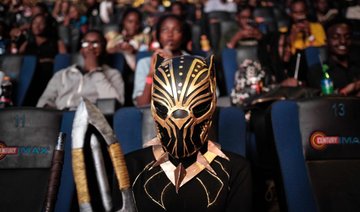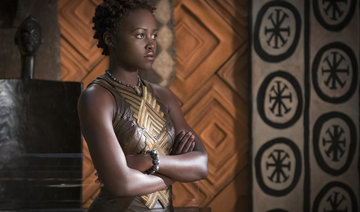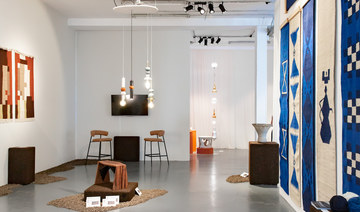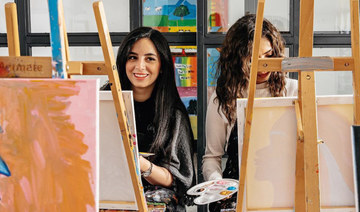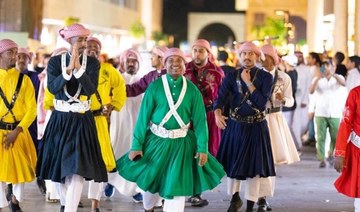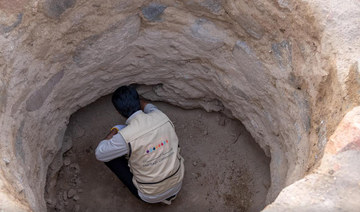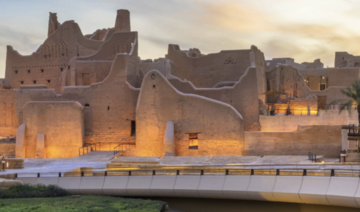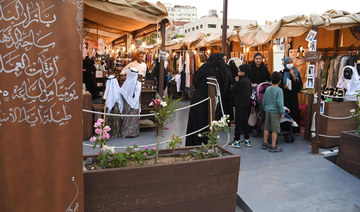NEW YORK: A wave of feverish anticipation, fawning critical acclaim and groundbreaking cultural meaning pushed “Black Panther” to a record-setting $192 million debut in US and Canada theaters, firmly establishing the superhero sensation as a box-office landmark.
The Marvel film from the Walt Disney Co. blew past expectations to become the fifth-highest-grossing debut ever, not adjusting for inflation, following only “Star Wars: The Force Awakens,” “Star Wars: The Last Jedi,” “Jurassic World” and “The Avengers.”
In estimates Sunday, Disney predicted a four-day holiday weekend of $218 million domestically and a global debut of $361 million.
Though the film’s international footprint doesn’t include several of the largest markets — China, Russia and Japan — it still ranks among the top 15 global debuts ever. It’s also the highest-grossing February opening weekend.
“All hail the King of Wakanda!” Disney declared, referring to the movie’s mythical and highly advanced African nation.
Ryan Coogler’s film, which cost about $200 million to make, is the most expensive movie with a largely black ensemble and among the few to be centered on a black superhero. The strong opening suggests “Black Panther” will easily set a box-office record for films directed by a black filmmaker.
The previous best is Sidney Poitier’s 1980 comedy “Stir Crazy,” which took in $322 million domestically, when inflation is calculated.
“Black Panther” set pre-sale records and saw lines around theaters over the weekend, including some who came costumed for the event.
“This is the very definition of a blockbuster: People lining up around the block to see a great movie,” said Paul Dergarabedian, senior media analyst for comScore. “A movie like ‘Black Panther’ is a cultural event that nothing on the small screen can really match in that way.”
Chadwick Boseman stars as T’Challa/Black Panther in the first stand-alone film for the superhero created by Stan Lee and Jack Kirby in 1966. The cast also features Michael B. Jordan, Lupita Nyong’o, Daniel Kaluuya and Letitia Wright.
The movie has been hugely acclaimed, with a 97 percent fresh rating from Rotten Tomatoes. Audiences agreed, giving it an A-plus CinemaScore. The film especially resonated among African-Americans, who made up 37 percent of moviegoers, according to comScore.
Dave Hollis, distribution chief for Disney, called the film’s success “a real source of pride” for Disney.
“Inclusion and representation matters,” Hollis said. “We know that great stories can come from anywhere, and our goal is to make films that reflect the wonderful diversity of our world and resonate with audiences everywhere — no matter who they are, no matter where they come from.”
Coming at one of the slower periods of the year, “Black Panther” benefited from little competition, and it can be expected to dominate the marketplace for weeks.
Last week’s top film, the erotic romance sequel “Fifty Shades Freed,” slid to third place, with $16.9 million in its second week for Universal. Sony’s children’s book adaptation “Peter Rabbit” held much stronger, taking the No. 2 spot with $17.3 million in its second week.
But moviegoers — and Hollywood — were focused on “Black Panther,” including how it would fare overseas. Though considered by most to be an outdated myth, some have claimed that foreign audiences have less appetite for films with largely black casts.
“Black Panther” vanquished those notions with $169 million in ticket sales. It was No. 1 in most international markets, though “Fifty Shades Freed” bested it in Germany.
Its release in China will come later. This weekend, the Chinese New Year holiday, local productions led by “Detective Chinatown 2” and “Monster Hunt 2” dominated Chinese theaters, with more than $140 million in ticket sales each.
“Black Panther” also performed especially well on large-format screens. Imax reported $30 million in ticket sales for the three-day weekend.
“There was a groundswell of wanting this movie to work, and then when it actually did as a film, itself, it just kicked it up a notch to a level no one could have ever predicted,” said Greg Foster, Imax Entertainment’s chief executive. “That makes me feel really good about the movie business.”
‘Black Panther’ blows away box office with $192M weekend
‘Black Panther’ blows away box office with $192M weekend
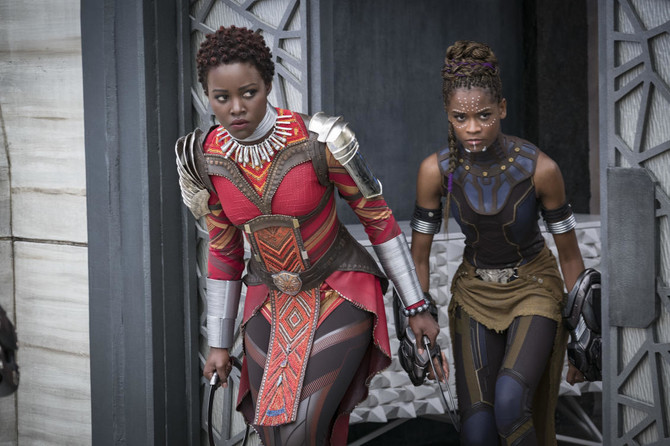
Qatar highlights Arab, South Asian and African films at the Venice Biennale
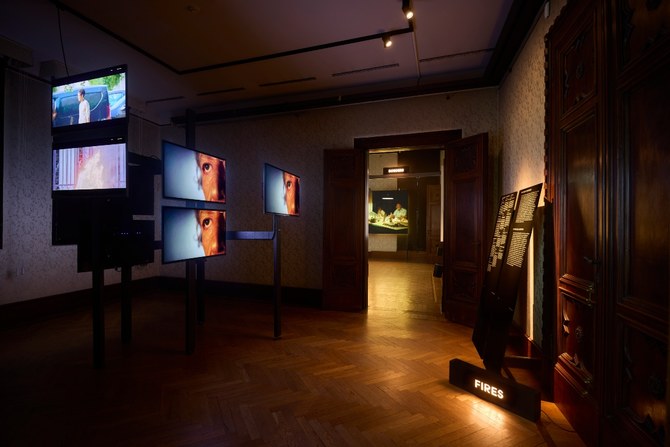
- Highlights include Ali Cherri’s “The Dam” (2022), charting the story of a Darfuri seasonal worker from Sudan
VENICE: For its second showing during the Venice Biennale, Qatar is staging the exhibition “Your Ghosts Are Mine: Expanded Cinemas, Amplified Voices” that takes a profound, in-depth look at the last decade of film and video art by Arab, South Asian and African filmmakers.
While Qatar has yet to have its own national pavilion, its exhibition occupies the 459-year-old Palazzo Cavalli-Franchetti on the Grand Canal. The works on show are drawn from the collections of Mathaf: Arab Museum of Contemporary Art, the Doha Film Institute and the forthcoming Art Mill Museum (scheduled to open in 2030). It is divided into ten galleries, each comprising films and video art according to a specific theme such as ruins, women’s voices, borders, exile and deserts and is curated by Paris-based Matthieu Orlean, a film and video expert. The exhibition will run until November 2024.
“Film is very relevant to our institutions and is an important part of our collections,” Zeina Arida, Director of Mathaf: Arab Museum of Modern Arab Art in Doha, told Arab News.
“It is a great way to document our contemporary times,” she added. “Film is also a great way of to share who we are and what we are going through, what we as societies from these less represented countries are living and the issues we are facing.”

In-depth storytelling can be found in the films on view by Shirin Neshat and Shoja Azari, Larissa Sansour, Fares Fayyad, Ali Cherri, Shaima Al-Tamimi, Ramata-Toulaye Sy, Hassan Khan and Sophia Al-Maria, among others.
In a documentary and largely journalistic style, many of the works shed light on current events and issues not often covered in mainstream media, including the now one-year old conflict in Sudan or migrants seeking new homes such as those captured in the film by Yemeni East African filmmaker Shaima Al-Tamini who charted the journey of her family from Kenya and Zanibar to the UAE.

“I was looking at movies that were different from the rest — that take a risk of telling their own story in a specific way,” curator Orlean told Arab News. “The filmmakers of these films are foreigners in their own environment because they are capturing events, whether personal or collective, that many people don’t see even in the news. Many deal with the themes of migration, social differences and exile.”
The works on view showcase both long and short films. A few highlights include Ali Cherri’s “The Dam” (2022), charting the story of a Darfuri seasonal worker from Sudan who works during the night to create a mud-brick monument. The film is a political fable that tells of the power of imagination against the backdrop of the Sudanese revolution. There is also Qatari artist Sophia Al-Maria’s well-known work “Black Friday” (2016) and British-born Egyptian multimedia artist Hassan Khan’s “Jewel” (2010) featuring a luminescent fish in dark waters followed by two men dancing to Arabic music.
“‘Jewel’ was triggered by a moment witnessed on the street in Cairo in 2006 — two men dancing around a speaker with raw, brutal and beautiful music blaring out,” Khan told Arab News. “It took four years before I could finally produce the work for Mathaf's opening exhibition in 2010 and by then so much was bubbling around us that it seemed to channel something real. Imagine a one second flickering daydream slowed down and stretched into six intense minutes. It is about our deepest sources — history, culture, emotion — and how we communicate the alien that lives inside all of us.”
Saudi Music Commission hosts open meeting on preserving national musical heritage
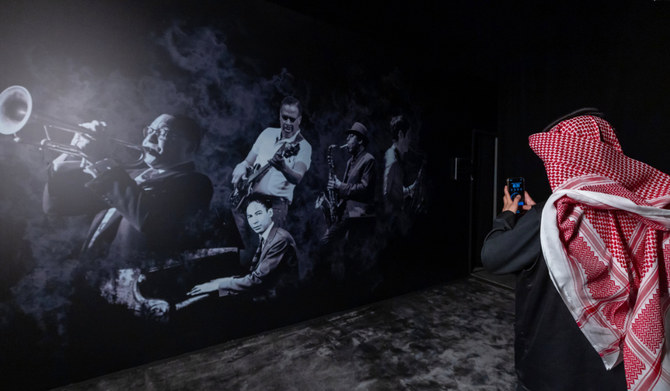
- The meeting highlighted the achievements of the Saudi Music Memory initiative, which secured rights for over 5,000 works, documented 305 musical notations, and produced two musical notation books
RIYADH: The Music Commission hosted an open meeting on the Saudi Music Memory initiative, engaging with music enthusiasts and industry professionals, the Saudi Press Agency reported on Tuesday.
The goal was to involve them in preserving the Kingdom’s musical heritage, as part of a series of open meetings designed to keep the musical community informed and encourage their participation in documenting and preserving Saudi music.
The virtual meeting outlined the initiative’s focus on documenting music and lyrics composed by Saudi artists through the mid-1980s, aiming to preserve and archive these works and the evolution of the Saudi music scene.
The meeting highlighted the achievements of the Saudi Music Memory initiative, which secured rights for over 5,000 works, documented 305 musical notations, and produced two musical notation books. The first book, titled “From the Memory of National Songs,” was released to coincide with this year’s Founding Day. The second book, “From the Memory of Ramadan Songs,” is completed and set to be published before Ramadan 2025.
The meeting featured interviews with renowned artists who experienced the early days of Saudi music, like Mohammed Abdu, Abadi Al-Johar, and Jamil Mahmoud, who shared stories about the origins of Saudi music and the role of its pioneers.
The meeting outlined the stages of the initiative, beginning with securing the rights to use classical musical and lyrical works, which has been completed. The second stage, transcribing musical works, is underway. Next, the commission plans to create documentary content and reproduce and distribute significant musical works, expected to be completed in the upcoming year. Once these stages are finished, the final step will be building an integrated platform.
The commission adhered to a scientific methodology, ensuring honesty and neutrality in all outputs of the initiative. It eliminated community and private artistic biases, aligned with the Saudi Cultural Memory Center, followed the guidelines in the documentation and digital archiving manual issued by the Ministry of Culture, and conducted a comprehensive inventory of all relevant materials and information.
The commission launched the Saudi Music Memory initiative to document the history of Saudi art, aiming to create a reliable reference, highlight its regional influence, offer academically documented research for musicians, researchers, and interested parties, and showcase high-value musical works that have not received due media attention, the SPA reported.
Macklemore shares teaser for new song in support of Gazans

DUBAI: American rapper Macklemore is set to release a new song this week in support of Palestine.
Titled “Hind’s Hall,” the track honors Hind Rajab, the 6-year-old Palestinian girl who was killed by Israeli soldiers in Gaza while waiting to be rescued.
Drawing its inspiration from the global student protests, the singer released a teaser of the track on his Instagram feed and said that all proceeds from its sale would be donated to UNRWA.
“The people, they won’t leave / What is threatening about divesting and wanting peace? / The problem isn’t the protests, it’s what they’re protesting / It goes against what our country is funding / Block the barricade until Palestine is free,” he sings.
“What you willing to risk? / What you willing to give? / What if you were in Gaza? / What if those were your kids? You’d want the world to stand up / And the students finally did.”
The full song has yet to be released on streaming platforms.
Saudi Heritage Commission event celebrates ancient Rakah
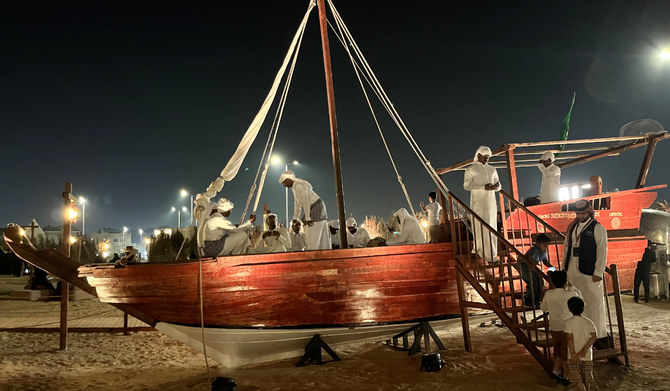
- “We want our customers to enter our space, either in our booth at the event this week or our studio location, and in just a short time be able to produce something customized to take home, she told Arab News
DAMMAM: The Heritage Commission is holding an event to celebrate ancient Rakah, with historical reenactments, guided tours, archaeological experts and handicrafts.
Once a major trading spot, some 1,500 years ago, the area takes its name from an indigenous tree species that once flourished there. The sandy environment was also once under the sea and shells can be found still glued to the rocks.
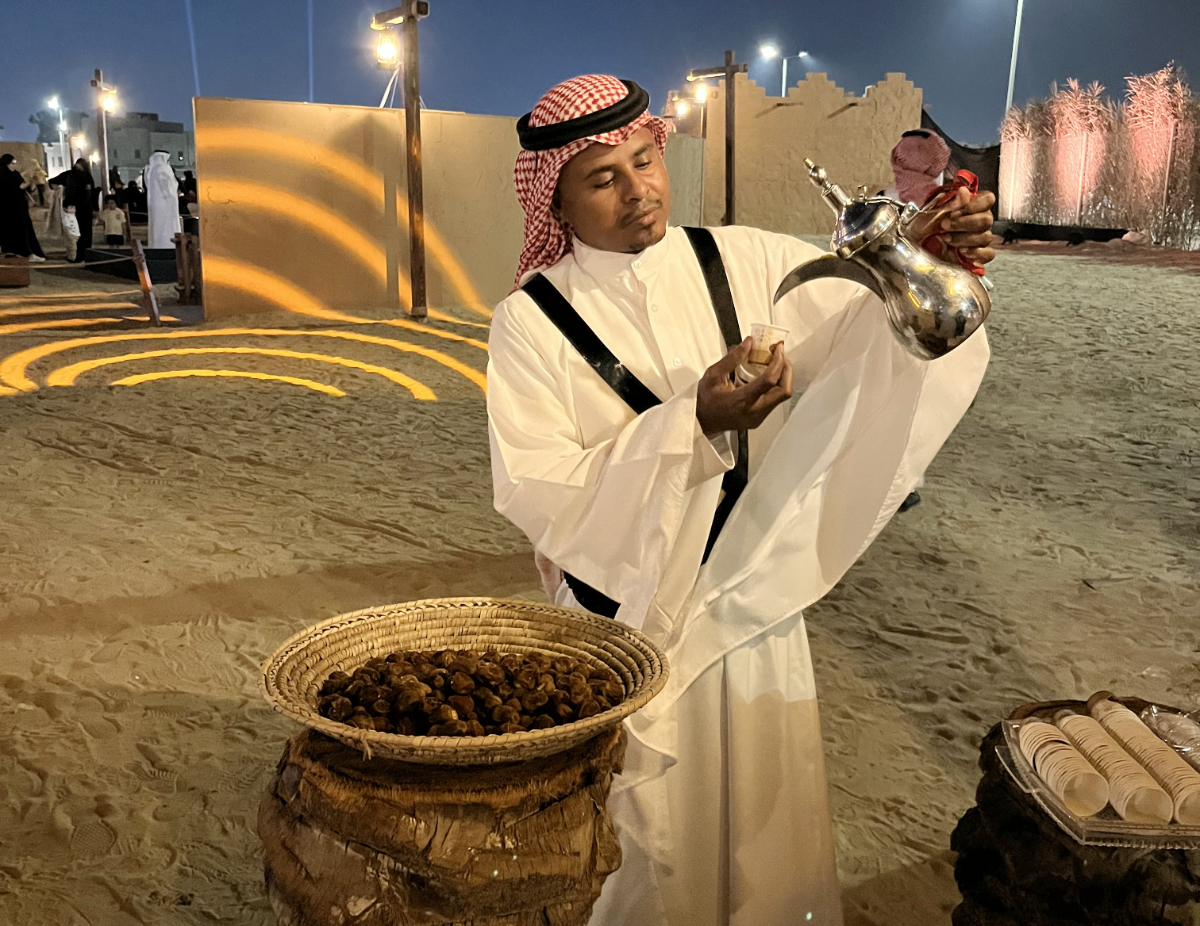
Many of the guides are female archaeology graduates from Imam Abdulrahman Bin Faisal University, formerly known as the University of Dammam.
Wala Al-Nafaiai, who co-founded Dam Studio, a local business that specializes in handmade goods made of cow and camel hide, said she was looking forward to showing off her products to visitors.
FASTFACTS
● Once a major trading spot, some 1,500 years ago, the Rakah area in Dammam takes its name from an indigenous tree species that once flourished there.
● The sandy environment was also once under the sea and shells can be found still glued to the rocks.
“We want our customers to enter our space, either in our booth at the event this week or our studio location, and in just a short time be able to produce something customized to take home, she told Arab News.

“Instead of going to a restaurant, we want you to spend the time to have an experience, produce something practical and learn skills you can utilize later.”
Al-Nafaiai said she was delighted with how many people had taken part in the workshops she provided at her booth.
It seems many (people) enjoy customizing something that they feel connected to once they make it with their own hands.
Wala Al-Nafaiai, Dam Studio co-founder
“It was so crowded … I was surprised that there were more adults than children who wanted to join in, although the craft was very simple,” she said.
“It seems many (people) enjoy customizing something that they feel connected to once they make it with their own hands. And that is our goal and the goal of the Heritage Commission who invited us to join this successful event.”

Visitors were also able to learn about the importance of dates to the community in ancient times and how local people would make and trade date syrup with visiting merchants.
Organized in cooperation with the Sharqiya Development Authority, the festival ends on Tuesday. For more information, visit heritage.moc.gov.sa or @mocheritage.
Riyadh forum highlights importance of cultural identity and Arab heritage
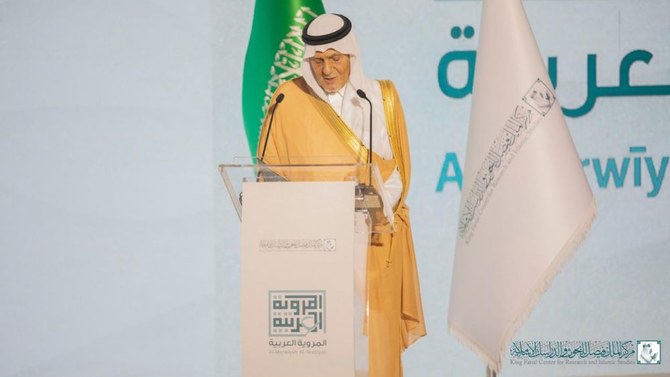
- Scholars, officials, experts explore and celebrate Arabian Peninsula
- Katakura Kunio said that both Japanese and Islamic cultures had historic roots in promoting peace
RIYADH: The Al-Marwiyah Al-Arabiyah Conference, called “Desert Culture,” concluded on Monday in Riyadh. The two-day event brought together a diverse group of scholars, officials, and experts to explore and celebrate the rich cultural heritage of the Arabian Peninsula.
Prince Turki Al-Faisal, the chairman of the King Faisal Center for Research and Islamic Studies, said that nomadism was central to Arab culture, emphasizing its roots in values over materialism. He noted that Arabs were natural storytellers, adept at turning chaos into clarity.
Katakura Kunio, president of the Motoko Katakura Foundation for Desert Culture in Japan, delivered a speech in memory of his late wife, anthropologist Motoko Katakura, which highlighted her research in Saudi Arabia.
Kunio said: “Motoko’s enduring passion for comfort inspired our foundation to establish the Comfort Prize, aimed at supporting both Japanese and international researchers and artists. This award honors individuals who dedicate their lives to enriching desert culture.
“In the current climate of positive change within Saudi Arabia, including the increased societal participation of women and the focus on tourism development, it is natural to re-evaluate the traditional value of comfort. Perhaps, in a world increasingly driven by hyper-capitalism, comfort can offer a remedy for the global population yearning for a slower pace.”
Kunio said that both Japanese and Islamic cultures had historic roots in promoting peace. He noted that Prince Shotoku of Japan endorsed “respect for peace” in his 17-Article Constitution, while the Prophet Muhammad established the Madinah Charter, which also emphasized peace and tolerance. These parallels suggested a common ground for fostering cross-cultural understanding, he added.
Abdullah Hamidaddin, assistant secretary-general for scientific affairs at the KFCRIS, described Al–Marwiyah Al-Arabiyah as a research initiative which aimed to address confusion about Arab civilization. It sought to combat attempts to undermine and marginalize Arab culture.
Hamidaddin said that the project used scientific methods to study Arab narratives and the origin of language in the Arabian Peninsula, while promoting dialogues, field studies, and critical analyses in various fields, including history, archaeology, sociology, philosophy, literature, and art.
The conference aimed to highlight the civilizational and cultural significance of the Arabian Peninsula, while seeking to strengthen the sense of Arab identity for future generations. It also promoted cultural exchange between the Arab world and neighboring regions.
A lecture titled “Gifts of God (Camels),” by Sulaiman Al-Theeb, cultural adviser at the center, was presented during the conference.
He spoke of the Arabian Peninsula’s deep connection with camels through three key concepts: rock and mural art; archaeological finds, like daily tools; and references to camels in ancient Arabic inscriptions, especially Thamudic writings.
Al-Theeb highlighted the significant status of camels in the region, which has earned them the moniker “the ship of the desert.”
Mohammed Al-Rowaily, a member of the Cultural Council at the Abdulrahman Al-Sudairy Cultural Center, said that the Arabic narrative played a crucial role in sharing ideas with others. He noted that Arabic storytelling enhanced cross-cultural understanding by conveying elements from history, oral literature, civilization, arts, and other creative works.
Hajar Al-Shammari, a linguistic researcher in Saudi history, said that the event boosted cultural engagement by fostering dialogue and cultural exchange among academics. Through the sharing of ideas it helped to establish a foundation for field studies and critical analyses focused on Arab perceptions and identity.
Al-Shammari added that Arabic storytelling played a significant role in promoting social cohesion, fulfilling the search for roots, and reinforcing values. This was especially important in the context of cultural identity and Arab heritage.


